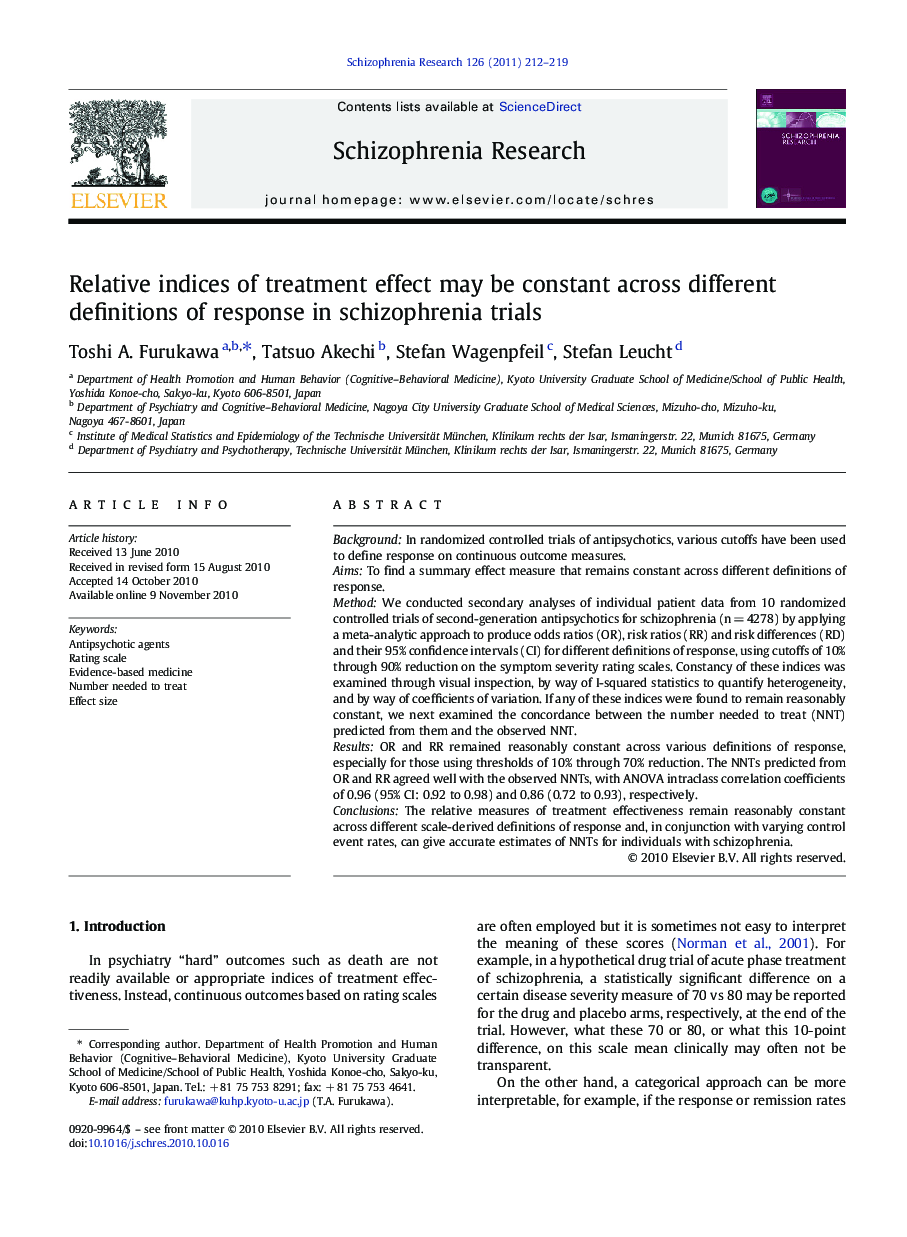| Article ID | Journal | Published Year | Pages | File Type |
|---|---|---|---|---|
| 339875 | Schizophrenia Research | 2011 | 8 Pages |
BackgroundIn randomized controlled trials of antipsychotics, various cutoffs have been used to define response on continuous outcome measures.AimsTo find a summary effect measure that remains constant across different definitions of response.MethodWe conducted secondary analyses of individual patient data from 10 randomized controlled trials of second-generation antipsychotics for schizophrenia (n = 4278) by applying a meta-analytic approach to produce odds ratios (OR), risk ratios (RR) and risk differences (RD) and their 95% confidence intervals (CI) for different definitions of response, using cutoffs of 10% through 90% reduction on the symptom severity rating scales. Constancy of these indices was examined through visual inspection, by way of I-squared statistics to quantify heterogeneity, and by way of coefficients of variation. If any of these indices were found to remain reasonably constant, we next examined the concordance between the number needed to treat (NNT) predicted from them and the observed NNT.ResultsOR and RR remained reasonably constant across various definitions of response, especially for those using thresholds of 10% through 70% reduction. The NNTs predicted from OR and RR agreed well with the observed NNTs, with ANOVA intraclass correlation coefficients of 0.96 (95% CI: 0.92 to 0.98) and 0.86 (0.72 to 0.93), respectively.ConclusionsThe relative measures of treatment effectiveness remain reasonably constant across different scale-derived definitions of response and, in conjunction with varying control event rates, can give accurate estimates of NNTs for individuals with schizophrenia.
